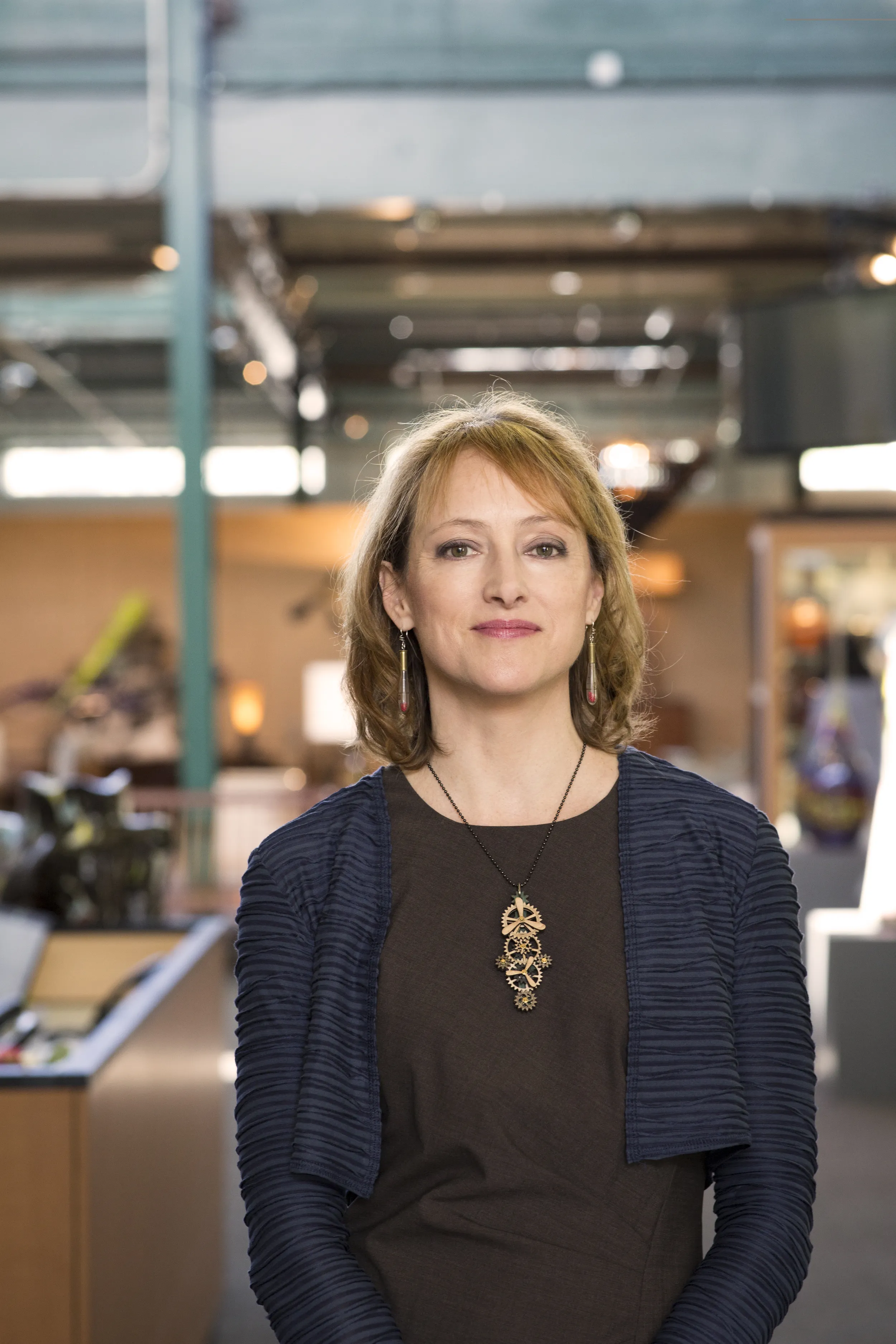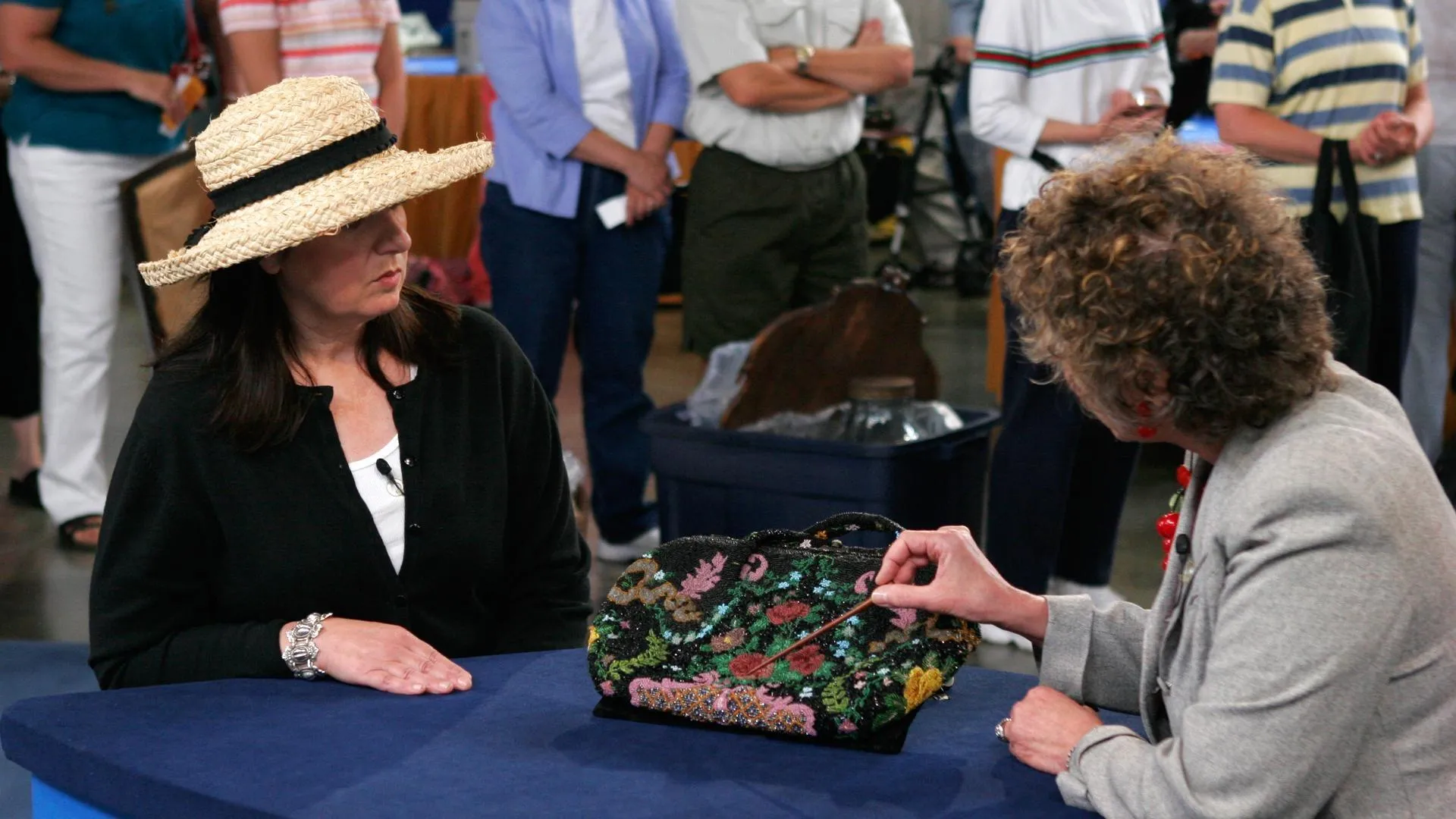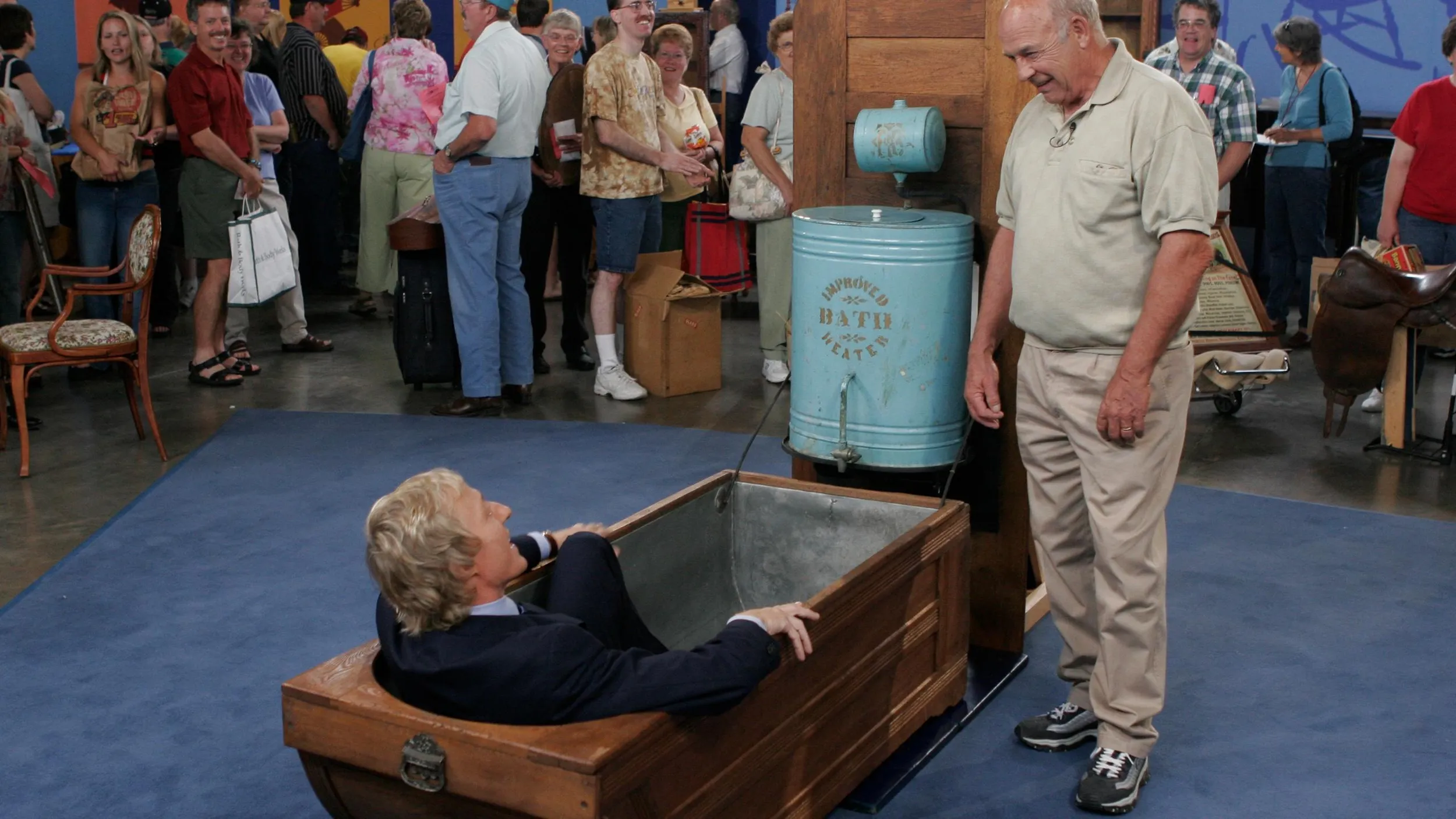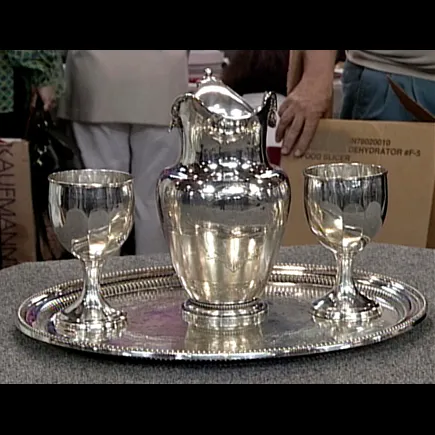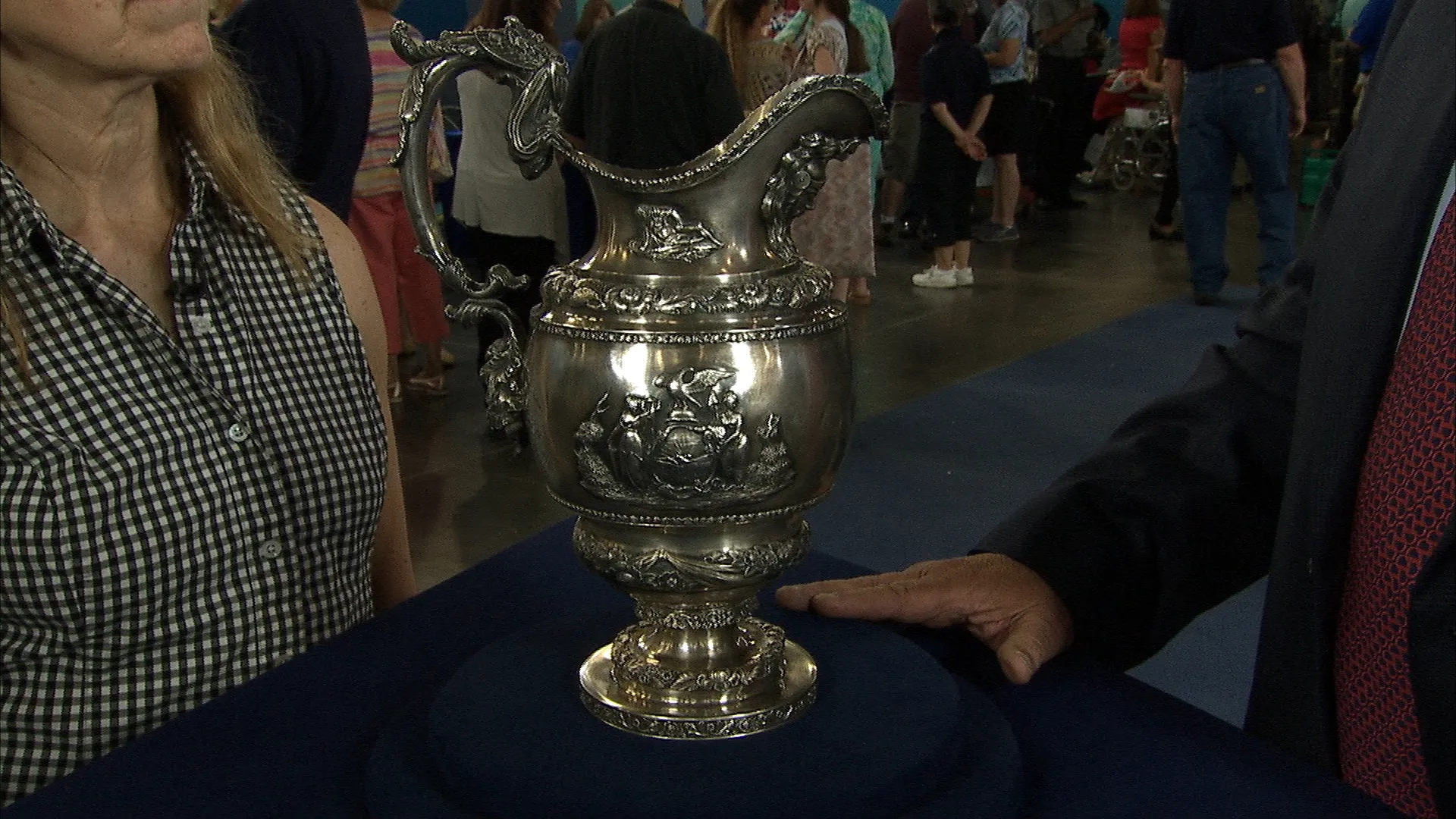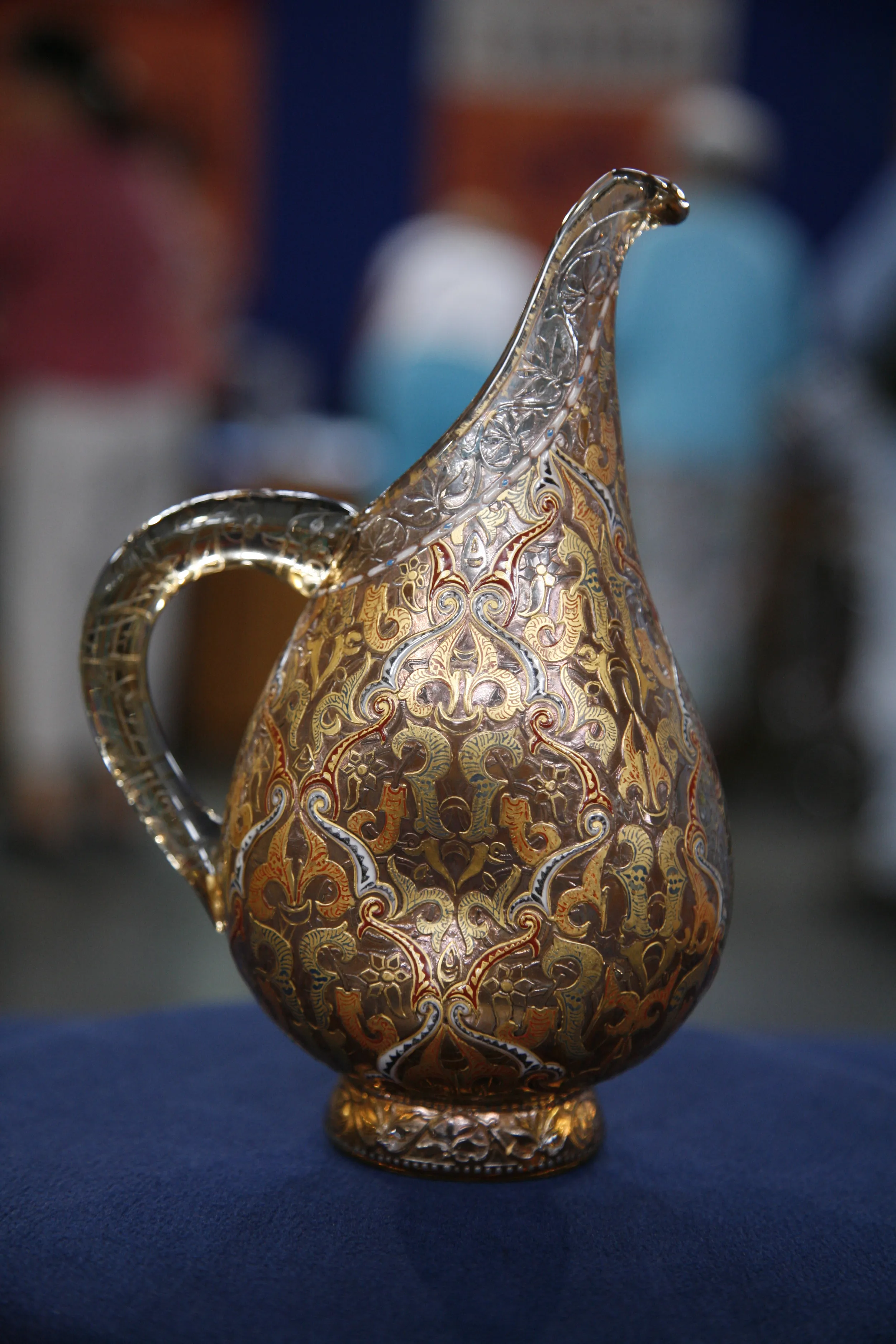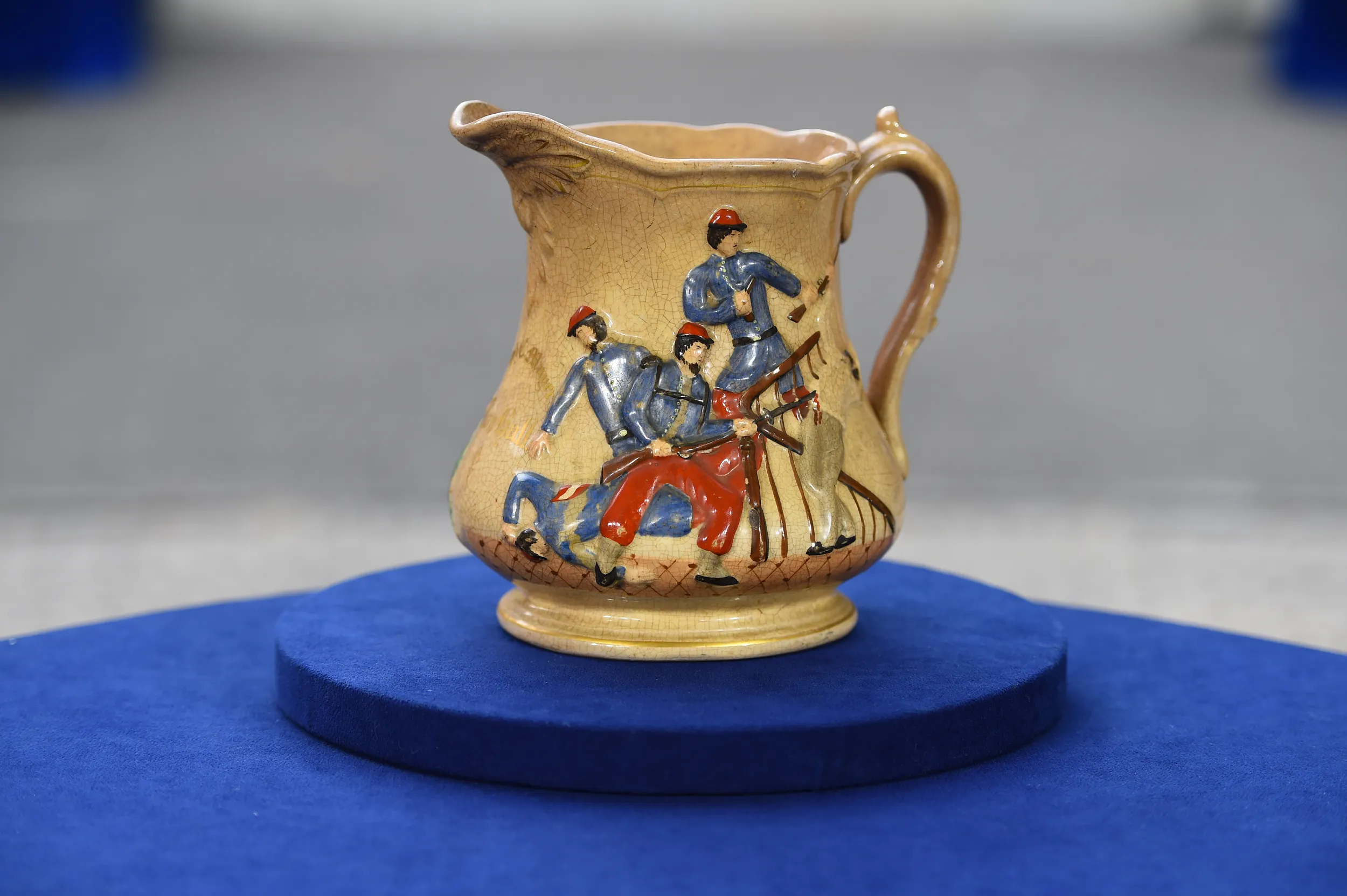GUEST: This is all pottery from the North Dakota School of Mines, and the clay was from there. Most of it is from my mother and my grandmother. But I have a few pieces from the instructors, too. This piece... (chuckling) This wild-looking piece is one of my grandmother's pieces that she did. This is a piece that was done by one of the instructors, as was this, the Viking ship piece. This little piece, called the Telemarken, my grandmother helped design the design on this one, although it was made by one of the instructors.
APPRAISER: What is the design?
GUEST: It's dancing women. It's a folk design. And it says on the bottom, "Telemarken," and that's the valley that my grandmother's family came from in Norway. And that's one of my favorite pieces. Then she also made this little cow. They had a herd of Jersey cows, and on the bottom is the cow's name and the year that it was made. Her name is Kari. The next piece is one that my mother made, and it was designed after a Native American design. And the end piece is one that my grandmother did again, out at the university.
APPRAISER: The ceramics department was set up in 1910 and went on until the '60s, and they taught so many thousands of students. It was about promoting clays from North Dakota, of which they had a great many. This is one of the special clays. This is Bentonite.
GUEST: Okay.
APPRAISER: And the pieces made of Bentonite clay could be painted on and fired in a single process.
GUEST: Okay.
APPRAISER: And most of these pieces are marked in the same way.
GUEST: Mm-hmm.
APPRAISER: Which is with the U.N.D. Indigo stamp.
GUEST: Mm-hmm.
APPRAISER: And this one is also signed by your mother. And it is a student piece.
GUEST: Yes. It was like a community education class, people coming in from the community to take classes.
APPRAISER: So some of these pieces that we see are made with sort of different levels of professionalism. And some are done, as you were saying, by instructors, such as Margaret Cable, who did this one.
GUEST: Right.
APPRAISER: And she was the head of the ceramics department.
GUEST: Yes.
APPRAISER: And this is Julia Mattson, who was one of the instructors.
GUEST: Mm-hmm.
APPRAISER: And it's really good and tight.
GUEST: Yeah.
APPRAISER: A plainer piece like this...
GUEST: Mm-hmm.
APPRAISER: ...of which many were made...
GUEST: Mm-hmm.
APPRAISER: Is worth about $200 to $300.
GUEST: Okay.
APPRAISER: At auction. A Bentonite piece like this, even though it's a little rough and fairly obviously done by a student, but because it's Bentonite...
GUEST: Mm-hmm.
APPRAISER: It's probably about $700 to $1,000 at auction.
GUEST:(chuckling) My goodness.
APPRAISER: These are rare; animals are rare. People love cows.
GUEST: Yes.
APPRAISER: There is a little break, so that will cost it a little bit, but that would be $750 to $1,000.
GUEST: (chuckling) Dear old Kari.
APPRAISER: Pretty much the same with this, $750 to $1,000.
GUEST: Oh, my goodness. (chuckling) Okay.
APPRAISER: This one, about $800 to $1,100, on the Cable pitcher.
GUEST: Oh, okay, sure, that's...
APPRAISER: This piece, which is decorated with a prairie rose design...
GUEST: Mm-hmm.
APPRAISER: It's also your state flower, isn't it?
GUEST: Right, it certainly is.
APPRAISER: And that comes up very often. That's a pretty popular pattern.
GUEST: Yes.
APPRAISER: And that has a good size and a lovely glaze. That's a molded piece. $1,000 to $1,500.
GUEST: Oh, my goodness. (laughing)
APPRAISER: And the humidor at the end, which is so bright and lovely and kind of unusual.
GUEST: Very unusual, yes.
APPRAISER: Unlike anything else I've really seen done there. That's $1,500 to $2,000.
GUEST: (laughing) My grandmother would be just amazed.
